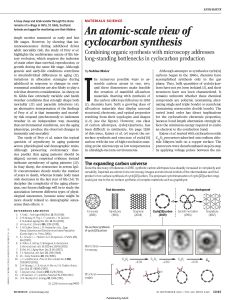
Article
An Atomic-Scale View of Cyclocarbon Synthesis
Combining organic synthesis with microscopy addresses long-standing bottlenecks in cyclocarbon production.
Science,
2019
References:
Kaiser et al. (2019)
,
Kroto et al. (1985)
Read or listen offline
1×
Recommendation
If you think microscopy is not useful to organic chemists, think again! A physics research group led by Professor Sabine Maier demonstrates how microscopy can be used to make and study fascinating carbon-based materials. The fact that there are different ways to combine carbon atoms means that it’s possible to create a variety of materials with unusual properties entirely from carbon. Anyone interested in the field of materials science will find this article intriguing and inspiring.
Take-Aways
About the Author
Sabine Maier is a professor of physics at the University of Erlangen-Nürnberg, where she leads a research team that focuses on using scanning probe microscopy to study materials at the molecular level.















Comment on this summary or Démarrer une discussion